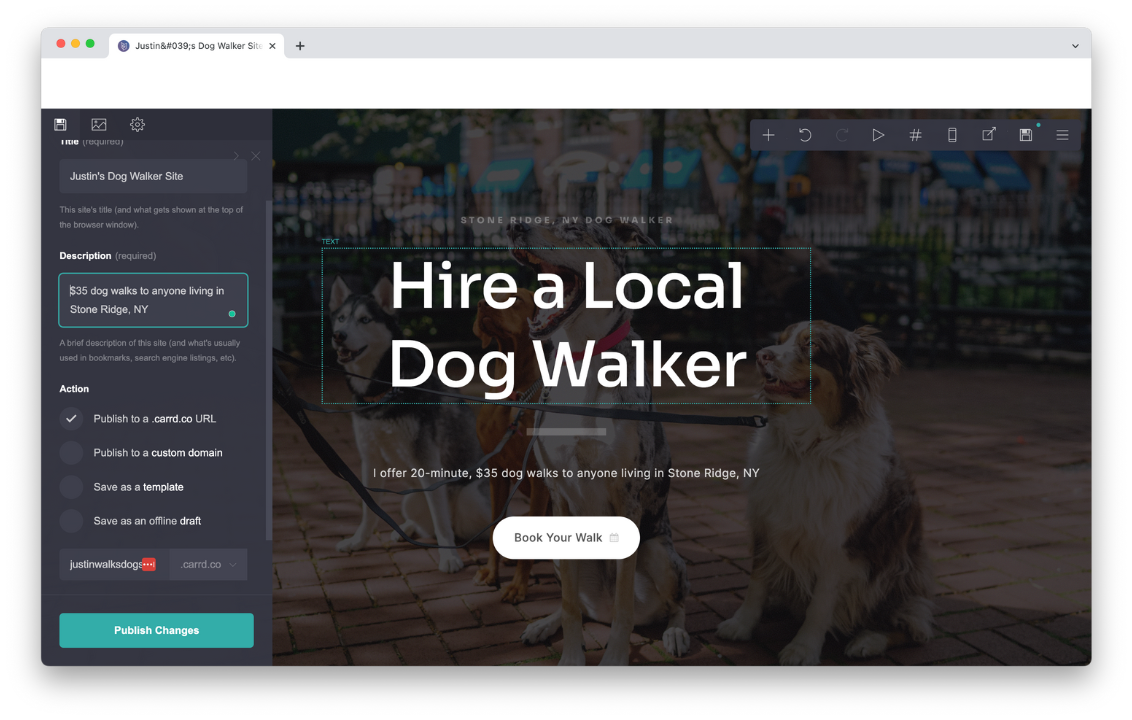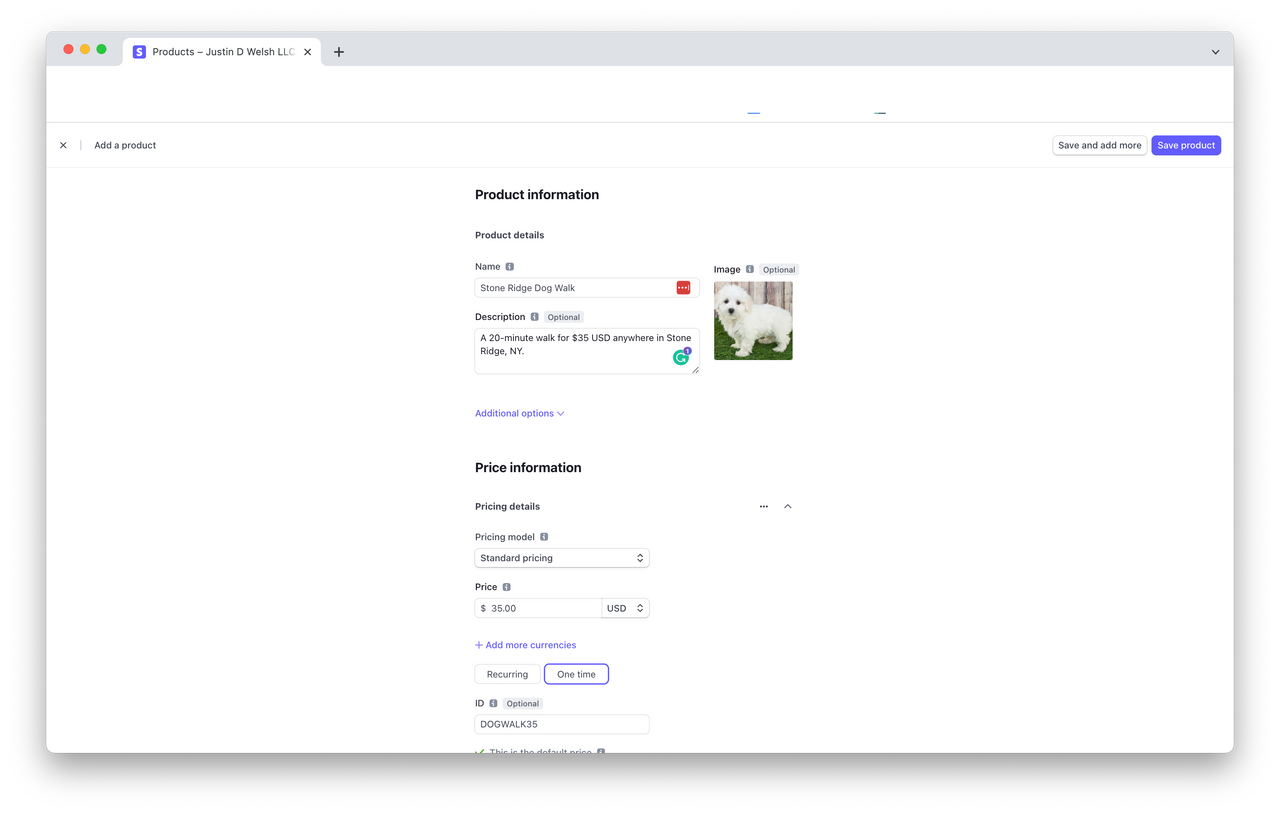In today’s issue, I want to show you how fast, simple, and affordable it can be to build a minimum viable product or business.
I cannot understate the importance of moving fast, testing, and trying your best to prove an idea before you ever invest a meaningful amount of time in building it.
Unfortunately, my calendar is littered with past coaching calls where people tell me about the 6 months they spent building a product, course, service business, etc. that nobody ended up buying or even caring about.
Let’s put a stop to that.
For this example, I’m going to build an MVP for a startup that will send a locally contracted dog walker to any house in my neighborhood for a 20-minute, $35 walk.
The entire business will be automated, cost less than $25 and 30 minutes to build, and be fully functional with zero code.
Let’s start a Rover competitor.
Step 1: Build out a Landing Page on Carrd
The first thing I’m going to need is a place to send local traffic.
The easiest way to build a beautiful, functional, no-code landing page with lots of bells and whistles is with Carrd.
I’ve used this for nearly 5 years to test every idea I’ve ever had.
I grabbed a template, uploaded a photo from Unsplash, and chose a free URL from Carrd.

Time: 8 minutes
Cost: $19 per year
Step 2: Connect Card to Stripe
Next, I’m going to need to collect payment before a dog ever gets walked.
Thankfully, Carrd comes integrated with Stripe, so you can use a simple Stripe widget.
Or you can just create a product in Stripe, generate a payment link, and redirect a button on the page to the payment link you just created.

Once someone pays, Stripe allows you to choose where you would like to send that person.
Time: 3 minutes
Cost: 2.9% + $.30 per transaction
Step 3: Redirect Stripe to a Booking Form (Free)
Once we’ve collected payment, I chose to send the person to a hidden page on my Carrd website.
On this page, I’ll collect the dog owner’s name, their dog’s name and breed, contact information, and the date, time, and address for the contractor to show up.

Time: 5 minutes
Cost: Free
Step 4: Connect the Booking Form to Twilio using Zapier
Lastly, I opened a Twilio account which allows me to send an SMS to a contractor with the information.
So once the form has been filled out, I used Zapier to collect the information from the form, send the information to Twilio, and let Twilio send an automatic text notification to the contractor.
 And now the job has been routed for completion.
And now the job has been routed for completion.
The contractor can make contact with the customer and we’re all done.
Time: 11 minutes
Cost: Free (Zapier) + $0.0079 per text (Twilio)
Some Takeaways and Notes:
There are a million different ways to build an MVP, with this just being one of them.
I could have chosen to build a completely different service business, pre-sold a product like a digital course, or delivered a paid ebook or Airtable page filled with information.
I also could have chosen to make it much more complicated as well:
For example, I could have added:
- Logic built into the form capture.
- A custom calendar that displays contractor availability.
- Post-calendar workflows to send the assignment to an open contractor.
- A much more robust landing page with an about section, reviews, etc.
But, none of that is necessary to get started. You now have a fully-functioning business.
Once you validate that there is local demand, you can collect reviews, raise prices, expand coverage, improve tech, hire more contractors, and enjoy better margins.
The sky is literally the limit.
That’s it for today.
